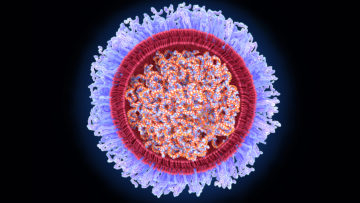Laura Sanders in Science News:
 Tiny molecules came up big in 2021. By year’s end, COVID-19 vaccines based on snippets of mRNA, or messenger RNA, proved to be safe and incredibly effective at preventing the worst outcomes of the disease.
Tiny molecules came up big in 2021. By year’s end, COVID-19 vaccines based on snippets of mRNA, or messenger RNA, proved to be safe and incredibly effective at preventing the worst outcomes of the disease.
mRNA vaccines tell our cells how to make a mimic of a viral protein, in this case the spike protein that the coronavirus uses to break into cells (SN Online: 12/16/21). The vaccine-generated protein then teaches the immune system what the real threat looks like should it later encounter that threat.
For decades, efforts to develop mRNA-based vaccines to fight infectious diseases like rabies have been on a slow and meandering road (SN Online: 6/29/21). But the urgency of the pandemic breathed new life into these attempts. The promise of mRNA technology now takes us well past this pandemic’s horizon. “We’re right at the beginning of a really exciting time,” says Anna Blakney, a bioengineer who studies RNA technology at the University of British Columbia in Vancouver.
The dreams are big: Fighting all sorts of infections. Attacking cancer cells. Restoring specific proteins to treat genetic diseases, such as cystic fibrosis.
More here.
